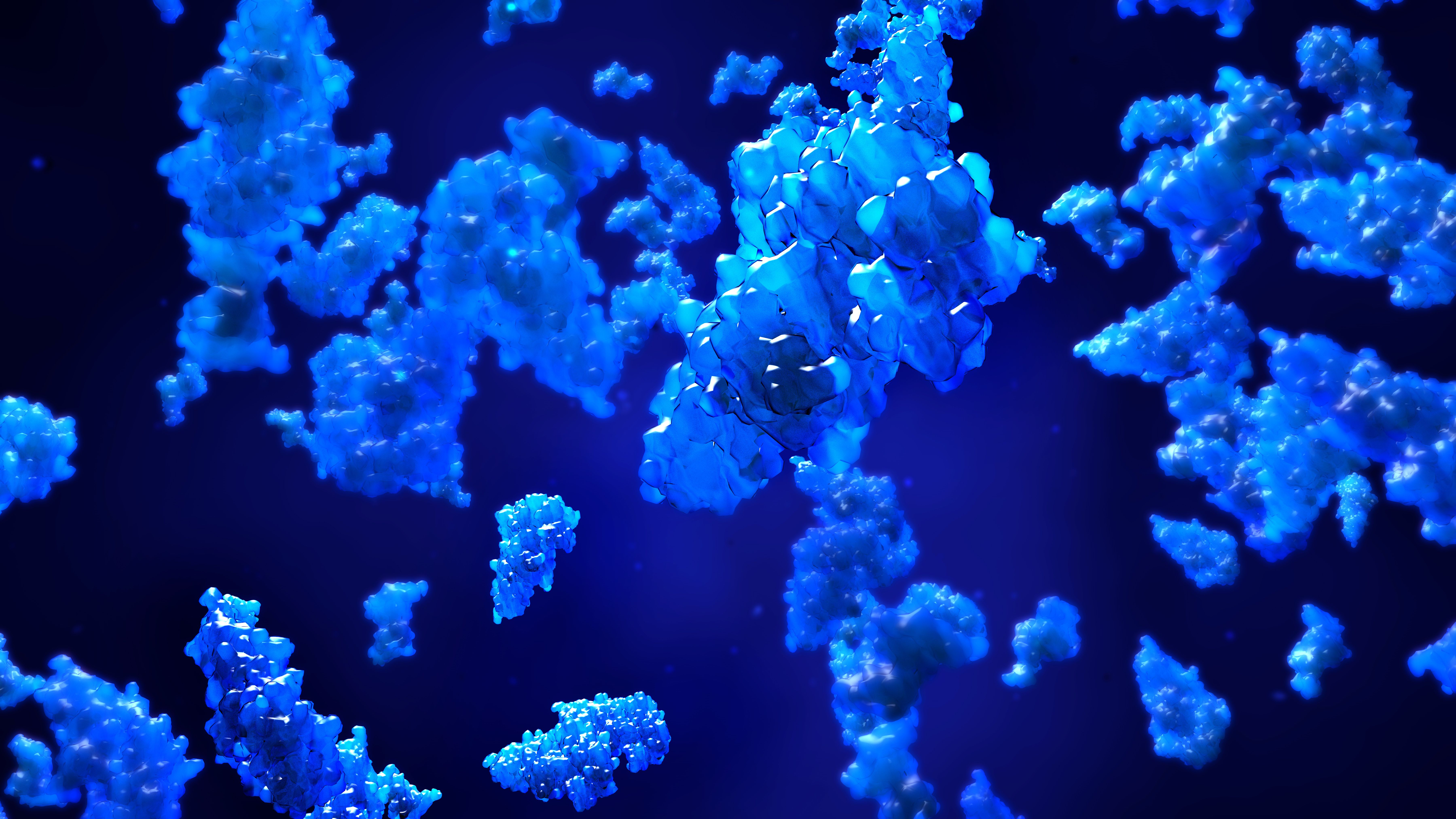Intact Protein Separation Combined with Offline Peptide Separation Requires Fewer LC–MS/MS Runs for Proteome Detection
Using intact protein separation (IPS) together with traditional peptide separation (PS) enhanced detection for LC–MS/MS better than either method could do independently.
A multifaceted enhancement of the process of liquid chromatography coupled to tandem mass spectrometry (LC–MS/MS) for the detection of proteins is laid out in a new study published in the Journal of Chromatography A (1).
3d illustration proteins or enzymes | Image Credit: © Design Cells - stock.adobe.com

The team of researchers in the Department of Chemistry and Biochemistry at Brigham Young University in Provo, Utah, USA said in the study that offline peptide separation (PS) using high performance liquid chromatography (HPLC) has been a traditional method, but that the alternative first-dimension technique of intact protein separation (IPS) was developed for the purpose of enhancing mass spectrometry (MS) proteome coverage.
Both approaches, the researchers said, enhanced detection of unique protein identifications in diverse ways. IPS was particularly effective in serum, while PS did better in tissues with fewer dominating high-abundance proteins (HAP) and in detecting post-translational modifications (PTM).
The efficacy of combining IPS and PS, then, was what the study aimed to measure, and the researchers said the pairing nearly doubled the number of proteins identified and also significantly increased the number of unique peptides detected per protein, compared to six PS-only fractionation pools.
The improvements are of note because in bottom-up MS analysis, peptide signals from HAPs often drown out those from low- and medium-abundance proteins (LAP and MAP, respectively). LC–MS/MS mitigates this suppression, but even adding a single dimension of LC is not always enough to reveal LAPs and MAPs.
Considering the disparities and drawbacks of these various methods, a more comprehensive evaluation of proteomics is needed because proteome knowledge, essential to the study of disease, will never be at its most complete unless LAPs are more broadly understood. For this study, the liver and brain tissue of mice as well as serum from blood samples were put through an IPS+PS analysis.
One of the researchers’ discoveries was the time saved by joining these two approaches. Whereas an analysis of 10 samples using PS only, with 20 pools per sample for equal enrichment in protein detection, would theoretically take nearly 17 days to complete given a 2-hour LC–MS run, a 6-pool IPS+PS strategy can be completed in 5 days. Additionally, while a commercial serum depletion kit costs about $14 for each run, the reusable HPLC columns used for IPS and PS in this experiment cost between $0.50 and $0.60.
While the researchers conducted this study with bottom-up proteomics in mind, they theorize that their optimized IPS technique would also work in top-down workflows. And, like PS-only, IPS+PS proved effective at increasing the number and types of PTMs detected. Lastly, the study suggests that continued innovation in stationary phase design will further improve the separation capabilities of HPLC when it comes to complex protein mixtures.
Reference
(1) Patil, L.M.; Parkinson, D.H.; Zuniga, N.R.; Lin, H.-J.L.; Naylor, B.C.; Price, J.C. Combining offline high performance liquid chromatography fractionation of peptides and intact proteins to enhance proteome coverage in bottom-up proteomics. J. Chromatogr. A 2023, 1701, 464044. DOI: 10.1016/j.chroma.2023.464044
Advances in Non-Targeted Analysis for PFAS in Environmental Matrices
March 27th 2025David Megson from Manchester Metropolitan University in Manchester, UK, spoke to LCGC International about the latest developments in non-targeted analysis (NTA) of per- and polyfluoroalkyl substances (PFAS) in environmental matrices based on a recent systematic review paper he has collaboratively published (1).
Study Explores Thin-Film Extraction of Biogenic Amines via HPLC-MS/MS
March 27th 2025Scientists from Tabriz University and the University of Tabriz explored cellulose acetate-UiO-66-COOH as an affordable coating sorbent for thin film extraction of biogenic amines from cheese and alcohol-free beverages using HPLC-MS/MS.
Quantifying Microplastics in Meconium Samples Using Pyrolysis–GC-MS
March 26th 2025Using pyrolysis-gas chromatography and mass spectrometry, scientists from Fudan University and the Putuo District Center for Disease Control and Prevention detected and quantified microplastics in newborn stool samples.
Multi-Step Preparative LC–MS Workflow for Peptide Purification
March 21st 2025This article introduces a multi-step preparative purification workflow for synthetic peptides using liquid chromatography–mass spectrometry (LC–MS). The process involves optimizing separation conditions, scaling-up, fractionating, and confirming purity and recovery, using a single LC–MS system. High purity and recovery rates for synthetic peptides such as parathormone (PTH) are achieved. The method allows efficient purification and accurate confirmation of peptide synthesis and is suitable for handling complex preparative purification tasks.







